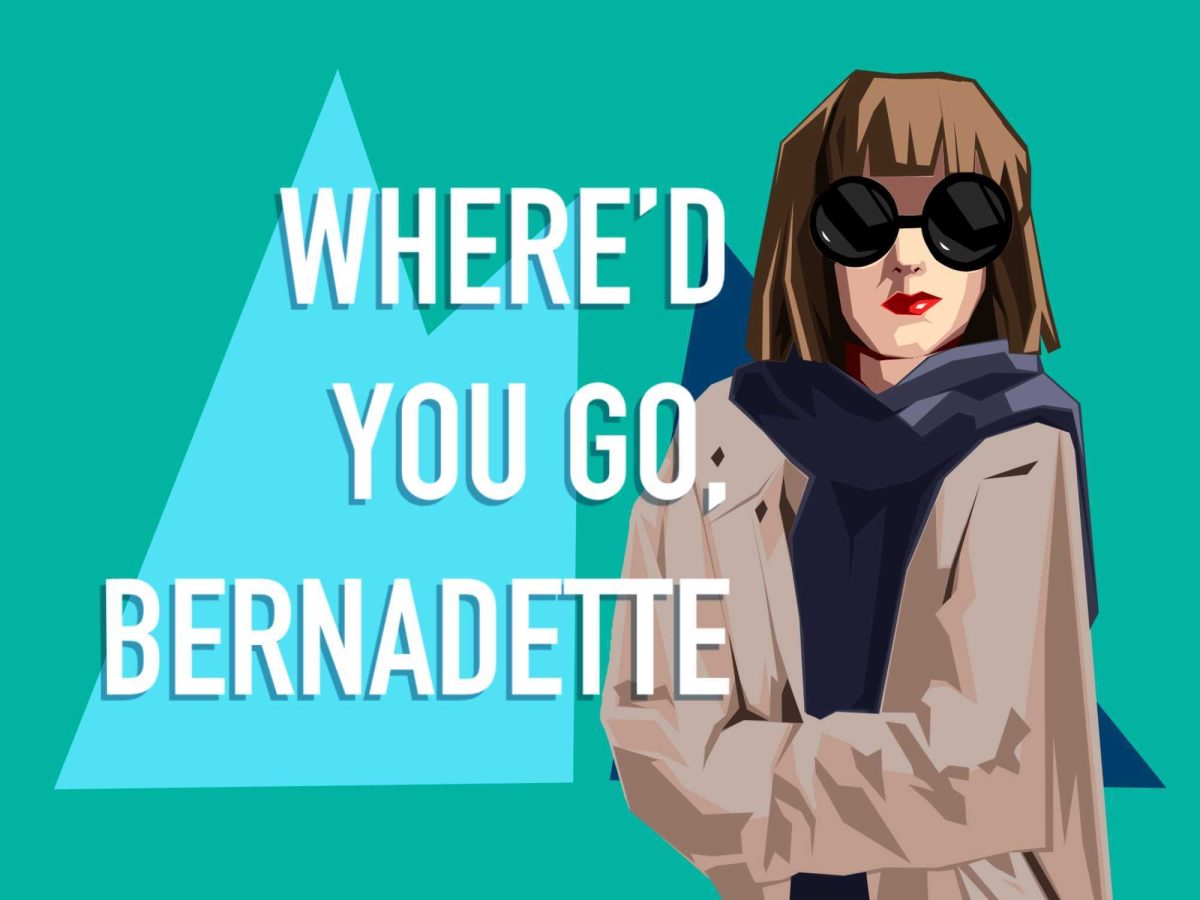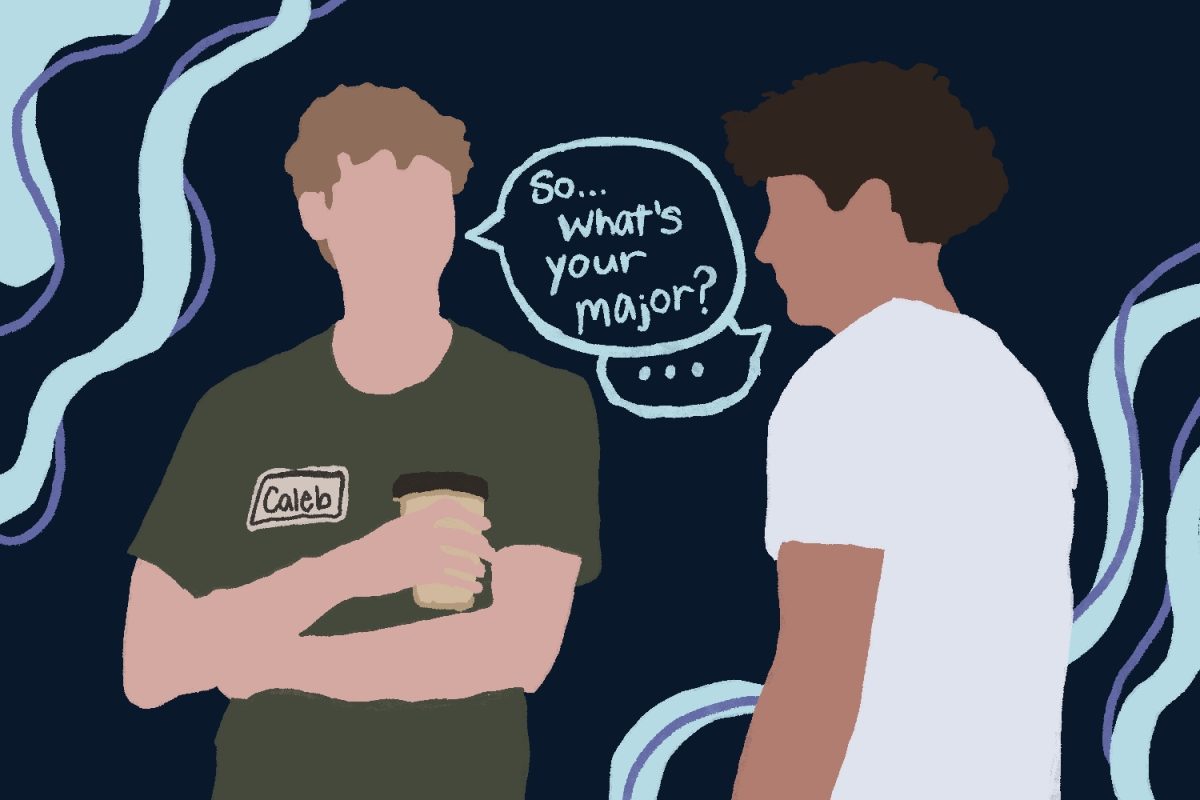America may have blazed the trail of made-to-order pop culture, but only the British could simultaneously mock and sanctify it. Such is Gorillaz. At the band’s recent show at the Avalon, the crowd included every twenty-something personality sub-culture from pretentious indie children to restless jocks replenishing their beer every 20 minutes. The anticipation ended as the DJ from the local radio station sponsor, playing circus master, suggested to the crowd that if we had any mind-altering pills to pop we’d best do it now. The animated video started running on the top half of the large screen which hung in front of the stage. The bottom half allowed one to watch the shadows of the musicians, without seeing the faces — a little bit of reality, a little bit of make-believe.
The hallmark of Gorillaz is that the act itself is fictional — the music is displayed as the work of a cartoon band with members called 2-D, Murdoc, Russel and Noodle. Few names of real-life personages are mentioned on the CD, although it is common knowledge that the band is largely the work of Damon Albarn, the lead singer of Blur. There are a host of other well-known names involved: Miho Hatori, Dan “The Automator” Nakamura, Kid Koala, Del tha Funkee Homosapien, as well as former Talking Heads members Tina Weymouth and Chris Frantz. But even live, it is the virtual band that is supposedly performing — the cartoon depictions of “the band” figured prominently into the pseudo-psychedelic scenes (the kind of trippiness “The Simpsons” once poked fun at) which accompanied each song. The lead singer, 2-D, stood in raunchy mock-arrogance tapping his foot and Russel played the drums — not quite in synch with the actual music — all while Noodle and Murdoc strummed guitars and basses. Then sequences of bombs and tanks followed. Some parts, like the sped-up start and stop video of a car ride through London that went with “Tomorrow Comes Today,” were sympathetic to the mood despite being constructed of fundamentals already overdone by MTV. Other parts were flamboyantly meaningless; filled with flashing colors and blinking insignias suggesting to many in the twenty-first century that LSD and Ecstasy will have less to do with self-awareness and more with target marketing.
All of which prompts one to ask, is Gorillaz just a whimsical money-maker? Albarn is a clever man, as many of the Blur albums demonstrate, and he is musically sincere: while The Great Escape may be accused of self-parody or Blur may be perceived as kidnapping the trappings of American indie rock, but Blur has consistently remained not only intelligent, but humorously quirky. Even 13, which was largely about Albarn’s break-up with Elastica singer Justine Frischmann, contrasts love songs like “Tender” with the tongue-in-cheek lyrics and production of “Bugman” or “B.L.U.R.E.M.I.” So it seems only natural that Albarn would be the one to craft an entire outfit around the mockery of the today’s fabricated boy bands and gelatin-busted top 40 hits: Gorillaz is the ultimate fake band, four cartoons whose projected personalities are as stereotyped as their clothing (which comes off as a cross between Abercrombie and Fitch and Urban Outfitters.) There is even the cute, hyperactive, artsy Noodle, a Japanese girl who speaks in gibberish. As part and parcel of the rock stereotypes, the drug culture is also parodied — the animations were touted as conducive to rolling. Cynics might proclaim it a commercialized rave fantasy, debasing Huxley-Leary idealism into rank profiteering.
But any accusations of moral and cultural flippancy are largely curbed by the actual album, which could stand on its own without the mystique of artificiality surrounding it. The mixed dish of rock, electronica and hip-hop might come across as too convenient a mixture: a factory production of the current genres meant to garnish hits in two or three different singles charts. However, it is more than just a layered-cake of styles and there is little that is unnatural or contrived about the songs. “Sound Check (Gravity)” flows from a simple melody to a chorus set around drum loops to a bridge of muffled rapping and scratching and then back around again, all with a feel that in the end is typical only of Gorillaz. Whether or not a second album is possible, or even desirable, is yet to be seen, but Gorillaz is more than a mere triumph of style over substance.
The concert itself, on the other hand, was not as triumphant as it was prophesied. The band, though visible only as shadows, managed to reproduce the album’s material without always sounding like recordings — the live drum set and Albarn’s vocals reminded one that there were actually people back there behind the curtain.
However, things started to go downhill when a rapper was brought out for the single “Clint Eastwood.” He addressed the audience, trying to get them to sing along, but there was something unnatural about it — the attempt at hip-hop type interaction, the sudden intrusion of such a blatantly live aspect which failed to come off properly into a concert so dependent on re-creation and artifice made the atmosphere seem a bit forced. The problem was only compounded by the fact that he did not have any valuable element to add, let alone equal Del tha Funkee Homosapien’s performance on the record. The impostor not only had no flow in his delivery but lacked the playfulness and originality of the original verses.
The rapping seemed just an unfortunate blunder until the impostor delivered the same rap verbatim when, for an encore, “Clint Eastwood” was played for a second time. The audience was more inclined to sing along by this point, but overall the encore compounded the lackluster feeling of the show. Along with “Clint Eastwood,” “Tomorrow Comes Today” was also repeated, with exactly the same arrangements as had been used an hour ago. While there were different video clips for each of the songs, the repetition was a weak way to end a performance lasting a mere 60 minutes. The band does have only one album to draw material from, but this hardly justifies the bland attempt at crowd-pleasing. The short video episodes that played at the end of the concert did not make up for the brevity either.
Perhaps this was a bizarre social comment from then band — not only do they mock the pre-fabrication of contemporary pop in their presentation, but they even repeat songs at concerts, as if their audience was on the same level as that of someone like Britney Spears: fans that might actually be content with a concert lasting only an hour long with an additional run-through of their favorite tune masquerading as encore. Gorillaz are not manufactured, they are virtual. Considering the stature of the parties involved, a first-rate concert should have been possible — the group could have extended their performance or given their encores some spice. At least they could have charged less than thirty dollars for a shirt. In the end, it’s fitting that a concert by the most artificial band in the world was less than absolutely satisfying. Instead of trying to come to life and meet the world half way, maybe it would have been better if they had remained a creation on a CD or cartoons on the television.















































































































